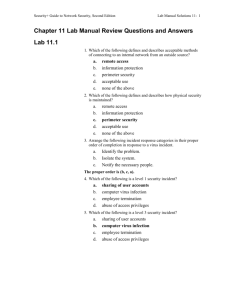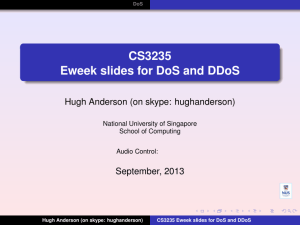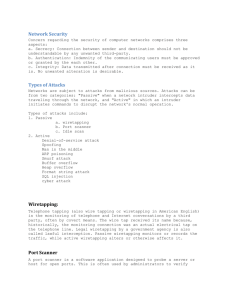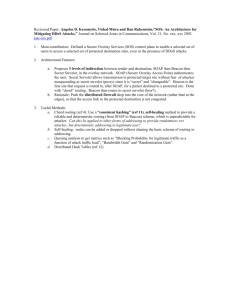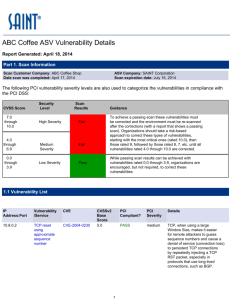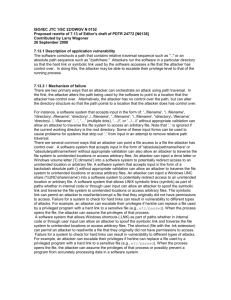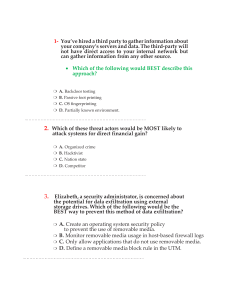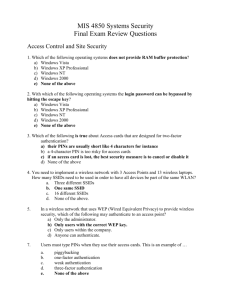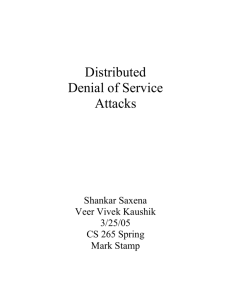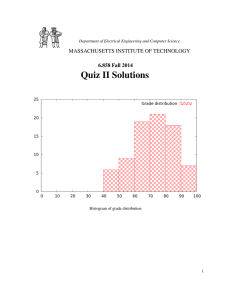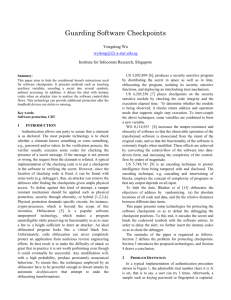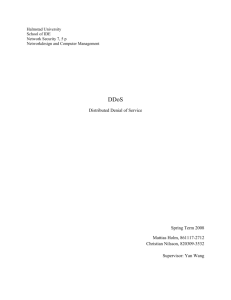Sample final 1
advertisement
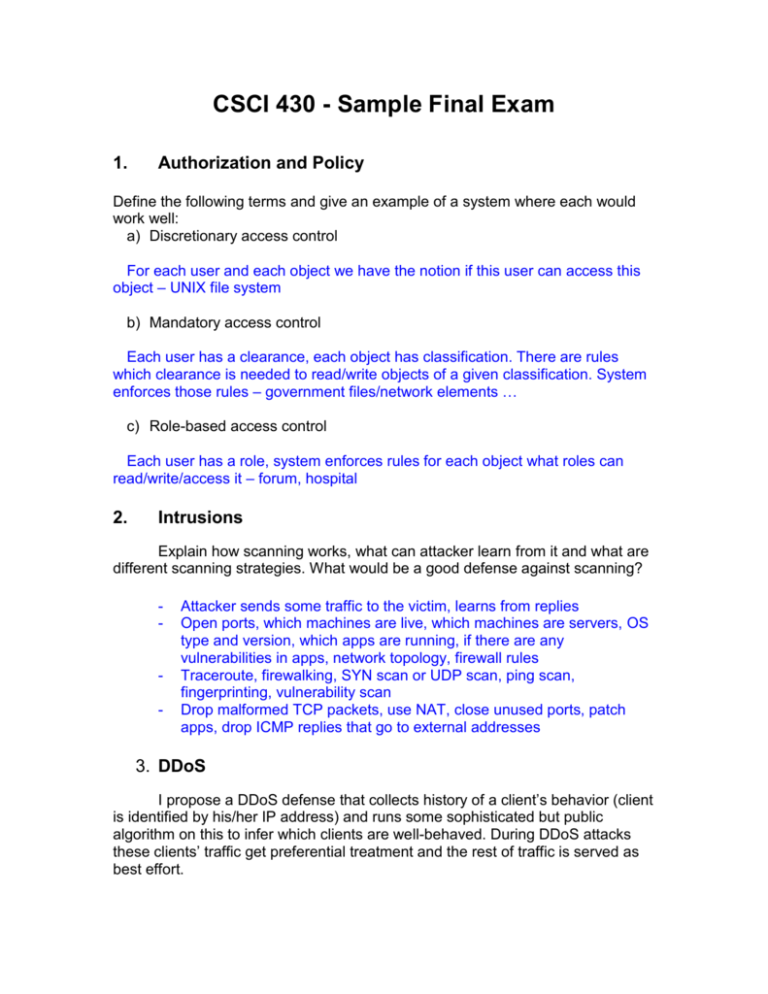
CSCI 430 - Sample Final Exam 1. Authorization and Policy Define the following terms and give an example of a system where each would work well: a) Discretionary access control For each user and each object we have the notion if this user can access this object – UNIX file system b) Mandatory access control Each user has a clearance, each object has classification. There are rules which clearance is needed to read/write objects of a given classification. System enforces those rules – government files/network elements … c) Role-based access control Each user has a role, system enforces rules for each object what roles can read/write/access it – forum, hospital 2. Intrusions Explain how scanning works, what can attacker learn from it and what are different scanning strategies. What would be a good defense against scanning? - - Attacker sends some traffic to the victim, learns from replies Open ports, which machines are live, which machines are servers, OS type and version, which apps are running, if there are any vulnerabilities in apps, network topology, firewall rules Traceroute, firewalking, SYN scan or UDP scan, ping scan, fingerprinting, vulnerability scan Drop malformed TCP packets, use NAT, close unused ports, patch apps, drop ICMP replies that go to external addresses 3. DDoS I propose a DDoS defense that collects history of a client’s behavior (client is identified by his/her IP address) and runs some sophisticated but public algorithm on this to infer which clients are well-behaved. During DDoS attacks these clients’ traffic get preferential treatment and the rest of traffic is served as best effort. a) Can I use this approach to protect a DNS server. Why/why not? No, because DNS traffic uses UDP and it can be spoofed. So attacker can assume IP address of a good client and bypass the filter. b) Can I use this approach to protect a Web server. Why/why not? Yes, Web uses TCP, it cannot be spoofed in established connections. Attacker can still spoof TCP SYNs, he cannot create established connection through spoofing. c) How can the attacker trick this defense to still send attack traffic to the victim (at least for a while)? Because classification algorithm is public attacker knows how to behave to get “good” classification. He can then send bad traffic until defense tries to reclassify him. d) What happens to new legitimate clients that are first seen during the attack? They compete with attack for resources until they manage to demonstrate “good” behavior. 4. Worms Explain how Early Warning system for worm detection works System collects scans. It tries to see if scan increase over time fits exponential model for contagious diseases – if scans are increasing exponentially over time. (no need to show formulas). 5. Botnets Explain what is Fast Flux and why botnets use it. What is single flux and what is double flux? Fast flux = changing mapping of domain name to IP address. Botnets use it because it helps confuse the defenders. If defenders try to take down servers that perform phishing or selling of bad products these server identities change so often that defenders cannot keep up. Single flux = changing mapping of name-to-IP for Web servers advertised in phishing messages or spam … Double flux = single flux + changing mapping of name-to-IP for nameservers of attacker domains 6. Privacy If Tor did not use encryption at all (all payload is in plain text) would Tor offer *any* privacy advantages over a regular direct connection, assuming that Eve can only see TCP/IP headers and not packet payload. Yes because Eve can only see headers between router hops and cannot correlate them if there’s a lot of traffic but routers can tell who’s talking to whom.
